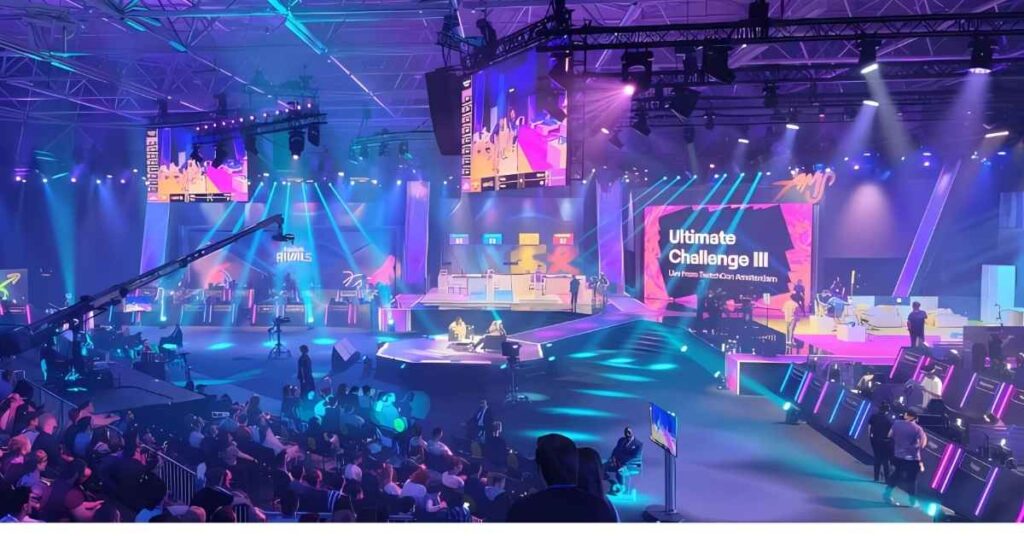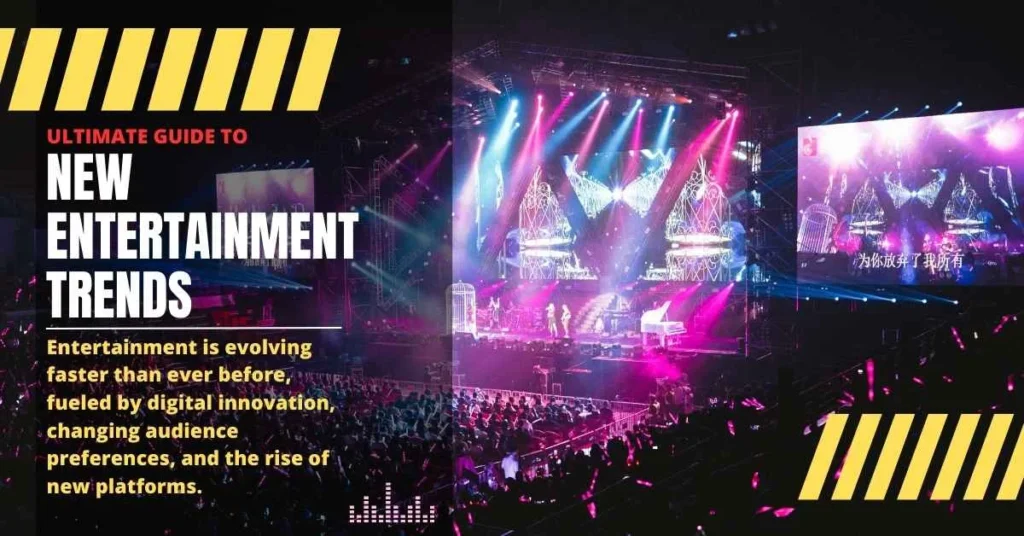Entertainment is a dynamic and ever-evolving landscape that shapes how we relax, connect with others, and engage with the world around us. From celebrity stories that tug at our heartstrings to technological innovations that transport us into new worlds, staying What New in Entertainment Trends And Must-Sees enhances your entertainment experience. In this article, we explore the most recent trends and must-see content, while diving deep into the impact of economic pressures, immersive technologies, and how the industry is adapting to consumer behavior.
Celebrity News and Personal Challenges
Celebrity stories often remind us that despite their fame, stars face life’s challenges just like anyone else. One such heartwarming moment came when Jax Taylor and Brittany Cartwright reunited to celebrate their son Cruz’s third birthday amidst their separation. This public reunion highlights how family remains a priority, even in difficult personal times. It offers a glimpse into the importance of maintaining relationships and showcases how the entertainment world can create touching moments of vulnerability and connection.
However, not all celebrity stories carry the same warmth. Jill Duggar, best known from 19 Kids and Counting, recently shared the devastating news of her pregnancy loss and the stillbirth of her first baby girl. The public nature of this grief allowed fans to express their condolences and opened up a discussion on coping with such profound loss. This kind of transparency in celebrity culture continues to influence how audiences respond to personal struggles and how media platforms share these intimate moments.
Economic Pressures Impacting Entertainment Consumption
As economic challenges intensify, consumer behaviors in the entertainment industry have shifted dramatically. The rising cost of living and inflation are directly affecting the way people engage with media, with affordability becoming a top priority.
One of the most significant changes has been the surge in streaming churn—where consumers cancel subscriptions to streaming services due to financial strain. In the third quarter of 2022, the U.S. saw a record number of cancellations, reflecting how inflation has affected discretionary spending. Many consumers are now weighing the value of entertainment subscriptions against essential expenses.
This trend is mirrored in the broader entertainment industry, where movie ticket sales and live event attendance are expected to decline. As people prioritize essentials over leisure activities, the future of in-person entertainment becomes uncertain. Entertainment businesses must adapt to this new reality by offering flexible, value-driven solutions, such as discounted subscription models or unique package offerings that better-fit consumer budgets.
The ability to adapt will separate the winners from the losers in the entertainment industry. Companies that proactively respond to these economic pressures will thrive, while those that don’t may struggle to retain their customer base.
The Rise of Immersive Experiences
One of the most exciting shifts in entertainment today is the rise of immersive experiences through technologies like augmented reality (AR), virtual reality (VR), and mixed reality (MR). These advancements are changing the way we consume content by blending the digital and physical worlds.
- Augmented reality enhances our day-to-day lives by overlaying digital content onto the real world. Applications like Pokémon Go or Snapchat filters show how easily AR can become a part of our everyday entertainment.
- Virtual reality takes immersion a step further by creating entirely new environments, fully transporting users into digital realms. Whether it’s gaming, virtual concerts, or travel experiences, VR has introduced unprecedented sensory-rich experiences.
- Mixed reality blends both AR and VR, allowing for interaction between the real and virtual worlds. This technology is already making waves in industries like education, entertainment, and training.
As consumer demand for immersive experiences grows, more industries are experimenting with these technologies to offer interactive, engaging content. VR and AR are expected to further revolutionize industries beyond entertainment, such as education and healthcare, in the near future.
Streaming Services and Industry Consolidation
The fierce competition in the streaming market has led to new strategies for survival and growth, with streaming services adapting to consumer demands by offering bundled packages and consolidating their offerings.
- Bundling services have become an attractive option for consumers who are looking for more value. For example, Disney’s bundled package that combines Disney+, ESPN, and Hulu allows subscribers to access a wide range of content at a more affordable rate.
- Consolidation has become another trend, where larger companies either acquire smaller ones or merge with competitors to create a more comprehensive entertainment ecosystem. This strategy allows businesses to pool resources and offer consumers a simplified and enriched content library, as seen in Amazon’s acquisition of MGM Studios.
These moves benefit consumers by offering more options at better value, but they also raise concerns about the diminishing variety of independent streaming platforms. While consolidation may simplify the viewing experience, it also risks reducing the diversity of content available.
Must-See Content Across Platforms
With so much content being released, it’s challenging to stay up to date. Here are some of the must-see shows and movies across popular streaming platforms:
- Netflix: Recent releases like Stranger Things and The Witcher continue to captivate global audiences, showcasing Netflix’s dominance in original series.
- Disney+: With the upcoming seasons of The Mandalorian and Marvel’s Loki, Disney+ remains a top choice for fans of blockbuster franchises.
- HBO Max: Known for prestige dramas, HBO Max delivers critically acclaimed series like Succession, alongside a slate of top-tier movies.
In addition to series and movies, live events and virtual concerts are making a strong comeback. Post-pandemic, we’ve seen a shift toward hybrid live-virtual events, allowing fans to engage with performances from the comfort of their homes. This trend could reshape the future of concerts and festivals, as artists continue to experiment with digital event formats.
The Impact of Consumer Preferences on the Future of Entertainment
As consumer preferences evolve, so too does the entertainment landscape. Affordability and customizability are two major factors influencing entertainment choices today.
- On-demand, customizable content: The rise of platforms like YouTube, TikTok, and Twitch highlights the growing desire for personalized content that allows users to choose when and how they consume media.
- Affordability is becoming critical, with consumers now seeking cheaper alternatives or bundled services that provide more value for money.
Businesses in the entertainment industry must continue to innovate and address these preferences by offering unique experiences that cater to both tech-savvy and cost-conscious consumers. The future of entertainment lies in creating content that is both immersive and accessible to everyone.
Conclusion
The entertainment industry is undergoing significant changes, shaped by economic pressures, technological advancements, and evolving consumer preferences. As immersive technologies like VR, AR, and MR transform the way we experience content, and as streaming services consolidate and adapt, businesses must respond to these shifts or risk being left behind. By staying informed about the latest trends, we can better navigate this evolving landscape and continue to enjoy a rich array of content that speaks to our ever-changing interests and needs.
From the latest must-see shows to the personal struggles of celebrities, entertainment will always be a reflection of the world around us, offering both escape and connection. Now more than ever, staying attuned to the latest trends and developments ensures that you get the most out of your entertainment experience.
FAQs About What New in Entertainment Trends And Must-Sees
What are the current trends in the entertainment industry?
Current trends in the entertainment industry include the rise of immersive experiences through augmented reality (AR) and virtual reality (VR), the consolidation of streaming services for better value offerings, and an increased focus on value-driven content due to economic pressures. These shifts are changing how audiences consume media and engage with content.
How has the economic landscape affected consumer behavior in entertainment?
The economic landscape has led to a surge in streaming cancellations as consumers prioritize essential expenses. Many are becoming more selective about their entertainment budgets, opting for platforms that offer greater value. The impact includes a decline in movie ticket sales and attendance at live events as disposable income decreases.
What role do immersive technologies play in entertainment?
Immersive technologies like AR, VR, and mixed reality are transforming the entertainment experience by blurring the lines between physical and digital worlds. These technologies allow audiences to engage with content more interactively, creating unique experiences in gaming, education, and storytelling.
What is streaming service consolidation?
Streaming service consolidation refers to the trend where platforms merge or offer bundled services to provide a comprehensive entertainment package. This strategy helps streamline user experiences and allows companies to pool resources, ultimately delivering more value to subscribers by combining various content offerings.
How can I stay updated on new entertainment releases?
To stay updated on new entertainment releases, consider following entertainment news websites, subscribing to streaming service newsletters, and utilizing social media platforms. Additionally, using apps that aggregate entertainment news can help you keep track of upcoming movies, shows, and industry trends.



